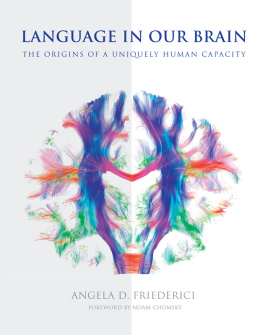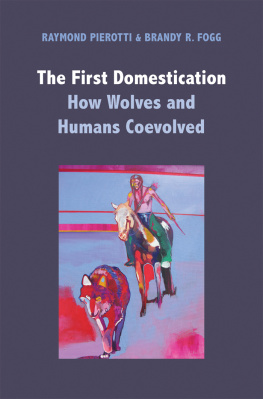The Domestication of Humans
The Domestication of Humans explains the alternative to the African Eve model by attributing human modernity, not to a speciation event in Africa, but to the unintended self-domestication of humans.
This alternative account of human origins provides the reader with a comprehensive explanation of all features defining our species that is consistent with all the available evidence. These traits include, but are not limited to, massive neotenisation, numerous somatic changes, susceptibility to almost countless detrimental conditions and maladaptations, brain atrophy, loss of oestrus and thousands of genetic impairments. The teleological fantasy of replacement by a superior species that has dominated the topic of modern human origins has never explained any of the many features that distinguish us from our robust ancestors. This book explains all of them in one consistent, elegant theory. It presents the most revolutionary proposal of human origins since Darwin.
Although primarily intended for the academic market, this book is perfectly suitable for anyone interested in how and why we became the species that we are today.
Robert G. Bednarik is a Professor at the International Centre for Rock Art Dating, Hebei Normal University, Shijiazhuang, China. He has served as Convener/CEO and Editor-in-Chief of the International Federation of Rock Art Organisations continuously since 1988.
The Domestication of Humans
Robert G. Bednarik
First published 2020
by Routledge
2 Park Square, Milton Park, Abingdon, Oxon OX14 4RN
and by Routledge
52 Vanderbilt Avenue, New York, NY 10017
Routledge is an imprint of the Taylor & Francis Group, an informa business
2020 Robert G. Bednarik
The right of Robert G. Bednarik to be identified as author of this work has been asserted by him in accordance with sections 77 and 78 of the Copyright, Designs and Patents Act 1988.
All rights reserved. No part of this book may be reprinted or reproduced or utilised in any form or by any electronic, mechanical, or other means, now known or hereafter invented, including photocopying and recording, or in any information storage or retrieval system, without permission in writing from the publishers.
Trademark notice: Product or corporate names may be trademarks or registered trademarks, and are used only for identification and explanation without intent to infringe.
British Library Cataloguing-in-Publication Data
A catalogue record for this book is available from the British Library
Library of Congress Cataloging-in-Publication Data
A catalog record has been requested for this book
ISBN: 978-0-367-89787-1 (hbk)
ISBN: 978-1-003-02113-1 (ebk)
To Elfriede
Contents
Figures
Foreword
The Domestication of Humans is a short but stimulating, highly readable volume that proceeds from a wide and very deep analysis of the current state of knowledge about human evolution, to presentation of several interrelated hypotheses suggesting how the later phases of our relatively recent human evolutionary transformations have occurred. Robert Bednarik is an acknowledged expert arguably, the worlds leading expert on rock art, in pursuit of which expertise his studies have expanded widely into a great many contiguous aspects of archaeology and anthropology. He also is professionally conversant with human biology, including molecular genetics, as well as psychology, history and philosophy. We would have described him by the over-used term Renaissance Scholar were it not for fear that the mantle more comfortably worn in that earlier historical period might cause his comprehensive knowledge to be perceived as outdated in our own time. It is not. In fact, the author is a genuine twenty-first-century scholar of the highest caliber in the social and natural sciences, and broadly familiar with the literatures of both domains. His volume succeeds in genuinely delivering what most scientific authors promise to publishers, but nearly always fail to produce: A book that can be read profitably by the general educated reader and professional scientist alike. This outcome arises from a combination of organization and passion.
The organization is achieved partly by opening each chapter with an abstract of its contents and ending with a paragraph that provides a transition to the chapter that will follow. Chapters themselves contain several sub-heads that signal coherent blocks of text that advance the authors arguments. Illustrations complement presentation of the major ideas that are being developed. Passion can be seen in Bednariks pervasive sense of purpose. His Renaissance breadth arises from the base of a Reformation of sorts, with scholarship that is pursued with the sense of mission reminiscent of a historical tradition that is neither the authors nor our own, but the spirit of which in some ways still lives in our shared culture: Martin Luther nailing his Ninety-five Theses on the door of All Saints Church in Wittenberg in 1517. Although the intellectual context here certainly is secular (as is our own frame of reference, as well as his) rather than religious, there is more than a little overlap in intent: to take knowledge from the hands of a narrow priestly class and make it more readily available to members of a wider audience genuinely in need of individual understanding.
The result is a coherent book, having three strands that are woven together with skill into a refreshingly original whole. The first strand comprises an informed review of the scholarship covering the last 5.3 million years of hominin evolution, with an emphasis on the later phases of the last several hundred thousand years that encompass members of our own genus, Homo. This most recent phase of our evolution which the author shows to be widely misunderstood, misrepresented and intellectually confused in many other sources is substantially clarified here. On this subject, Bednariks knowledge is encyclopaedic and his explanations enlightening. Many authors writing about the evolution of the genus Homo and its antecedents largely play a name game that simply catalogues and describes various putative species of humans. This family photo album approach produces a static record of descriptions and reconstructed images, along with the places and dates of specific finds. Many creators of those multiple human taxa flourish their professional authority by claiming to have discovered the oldest or most advanced or most complete specimens. Exciting as this competitive approach may be, it does little to explain how evolution occurs, because the processes leading from one putative species to the next rarely are discussed and described. The authors critique of this present state of the discipline is accomplished in Chapter 1 (Introduction: The Empirical Context).
The second strand of inquiry helps to explain just why the latest phase of human evolution is so widely misunderstood. In the quasi-commercialized world of research grants and contracts, investigators hoping to secure as much financial support for their work as possible commonly leap aboard the main bandwagon of opinion, to which the majority of the fields professionals already are clinging. Some younger authors exercise self-censorship in order to avoid criticism from senior researchers who could prevent publication in a leading journal or otherwise make their career progress difficult. Thus, as Professor Bednarik elaborates, while the overlapping traditions of palaeoanthropology and Pleistocene archaeology purport to inform and influence the publics perception of the human past, instead they very largely have reflected and amplified some rather hackneyed public, and particularly socio-political, opinions. As a prime example, for most of the last three decades the pattern of later human evolution has been forced into the Procrustean bed of the African Eve myth that uses a seemingly sophisticated molecular biological framework to paraphrase the Biblical story of Genesis. Just as the Biblical Eve is a character of historical revelation, so is the mitochondrial Eve equally an imaginary construct for different didactic purposes. The familiar Biblical referent helps with acceptance, though not genuine understanding.
Next page





